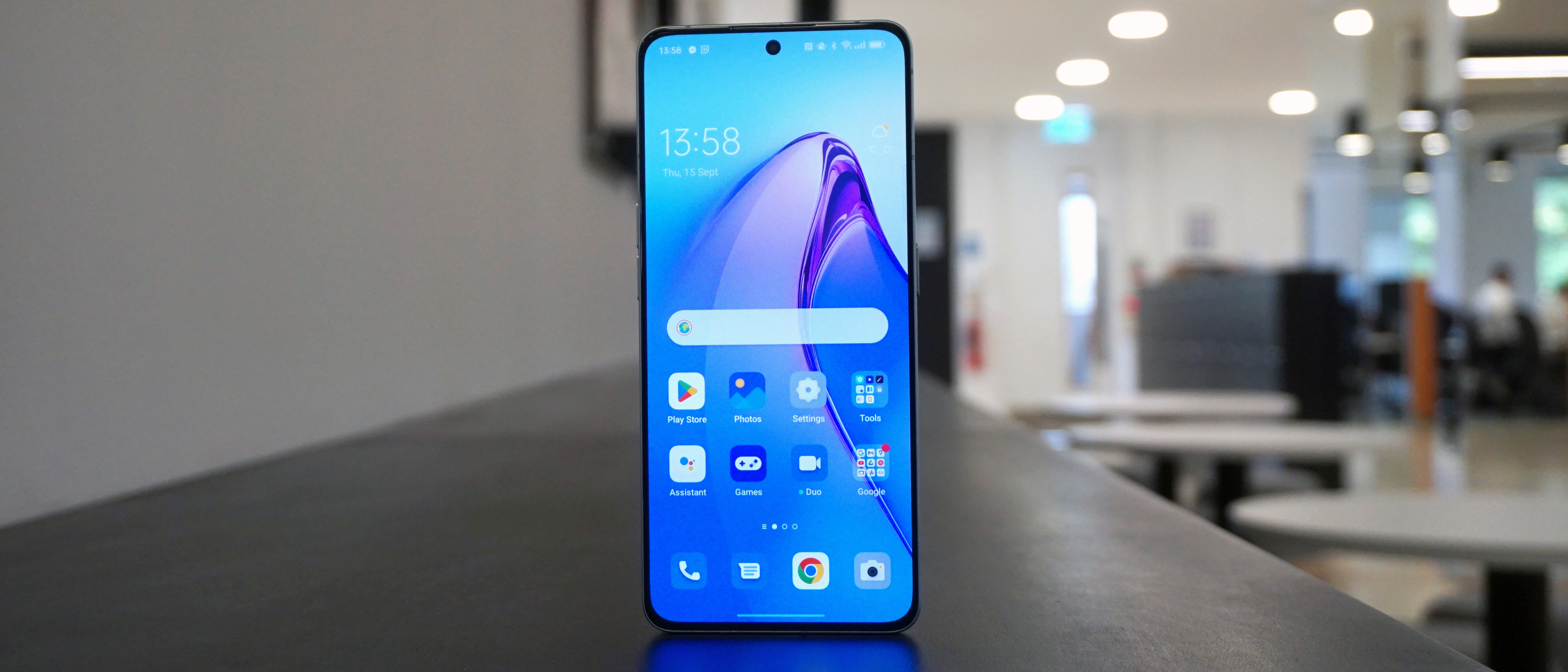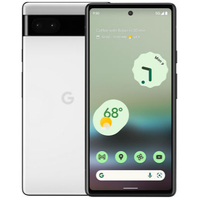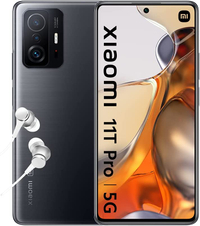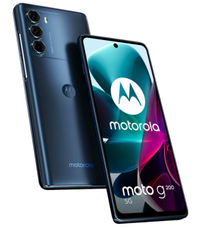TechRadar Verdict
The Oppo Reno 8 Pro is a decent phone for the price, with a powerful processor, long-lasting battery, good-looking display and fast charging all contributing to creating a solid all-rounder. Some might find the display divisive though, and while we’re fans of the looks, the actual user experience created by the design wasn’t appreciated. Plus, at this price, you can find some incredibly tempting rivals, especially from Google.
Pros
- +
Fairly powerful for price
- +
Good-looking display
- +
Fast charging
Cons
- -
Awkward design
- -
Redundant third camera
- -
Uncompetitive price
Why you can trust TechRadar
Oppo Reno 8 Pro two-minute review
Oppo’s decision to price its new mid-range flagship phone the same as the Google Pixel 6 is as baffling as it is bold – directly rivaling the hugely popular tech behemoth seems to be an exercise in audacity.
What’s somewhat surprising, though, is that the new Oppo Reno 8 Pro manages to hold its own against Google’s 2021 flagship – for the most part at least. However, Oppo is clearly targeting a different type of user than Google’s camera-focused Pixel phones.
Launched alongside the Reno 8 and Reno 8 Lite in late August 2022, the Reno 8 is the newest generation of mid-range phones from the middle child of Oppo’s lines. The company has enjoyed a ‘will they, won’t they’ strategy for releasing its Reno line in the West, but the 8 series marks the biggest song-and-dance the company has made about its Reno line since the debut of the originals in 2019.
It’s no small wonder either, as the Oppo Reno 8 Pro is the most high-end member of the family since the Reno 10x Zoom in that original batch.
Oppo has spent a few years since then making more generic Android phones, but it’s clearly also learned how its users work and what they’re looking for. The Reno 8 Pro drops many bells and whistles to focus on a few core areas.
One of those is performance, as the Oppo Reno 8 Pro is one of the more powerful phones at this price we’ve tested. It’s great for gaming and intensive exercises, and we found it just as good as true (and expensive) top-end chips.
It also has a good-looking screen, with some good specs for the price, as well as a rear that some might find attractive too. However, the overall design disappoints, with an angular edge that sits uncomfortably in the hand.
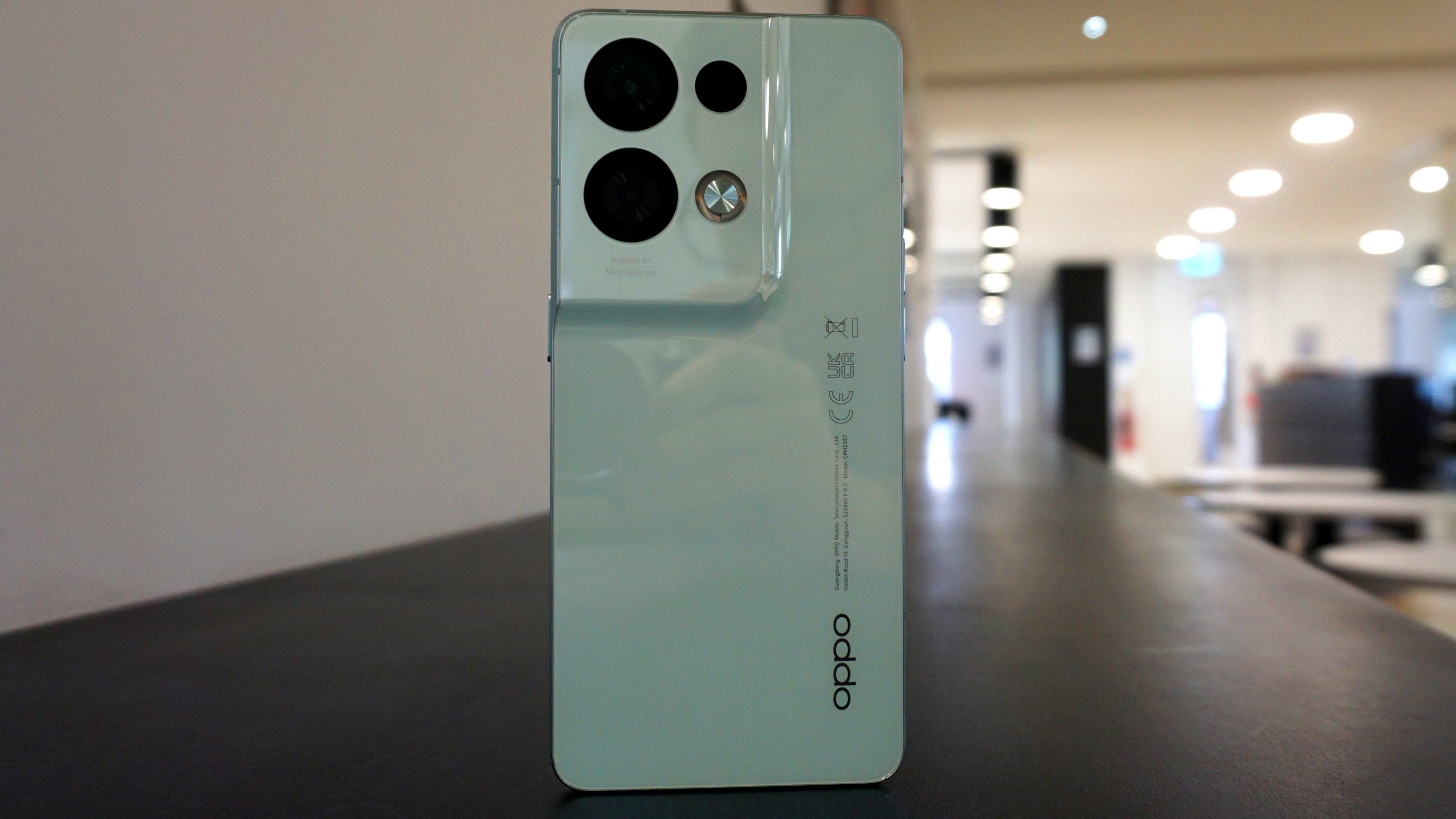
The Reno has fast 80W charging, but Oppo has packed in its battery health engine to ensure the phone keeps ticking for much longer. This should ensure you don’t find the handset’s battery life dropping too low too quickly.
It’s not a perfect phone, and we’re not talking about the uncomfortable design either, as there are a few key areas where the company misses out. One is the cameras – despite packing it its neural processing chip to improve photography and AI, the Reno 8 Pro is just fine for taking photos. It doesn’t noticeably beat any other handsets at the price and would be lapped by devices costing just a tiny bit more.
Even phones costing the same amount can beat it. The same-price Pixel 6 is simply better for photography, with improved AI, extra modes and a phone that’s more comfortable to hold for photoshoots. It’s a shame that Oppo thinks its neural processing unit is better than simply adding in a zoom lens to its phone, given how much that improved the Reno 10x Zoom.
If you care about photography or having a small-form phone, the Oppo Reno 8 Pro won’t compare to the Pixel 6, but if streaming media or playing games is more important to you, you might still consider Oppo’s newest handset.
Oppo Reno 8 Pro price and availability
The Oppo Reno 8 Pro costs £599 for its single 8GB RAM and 256GB storage option – that converts to roughly $700 or AU$1,010. Oppo doesn’t sell phones in the US, so don’t expect a release there, though the phone is listed on the company’s Australian website (albeit without a price) so it’ll likely release there before long.
As mentioned, at that price, this is a rival to the Google Pixel 6, which starts at $599 / £599 / AU$999, though for 256GB the price is $699 / AU$1,129.
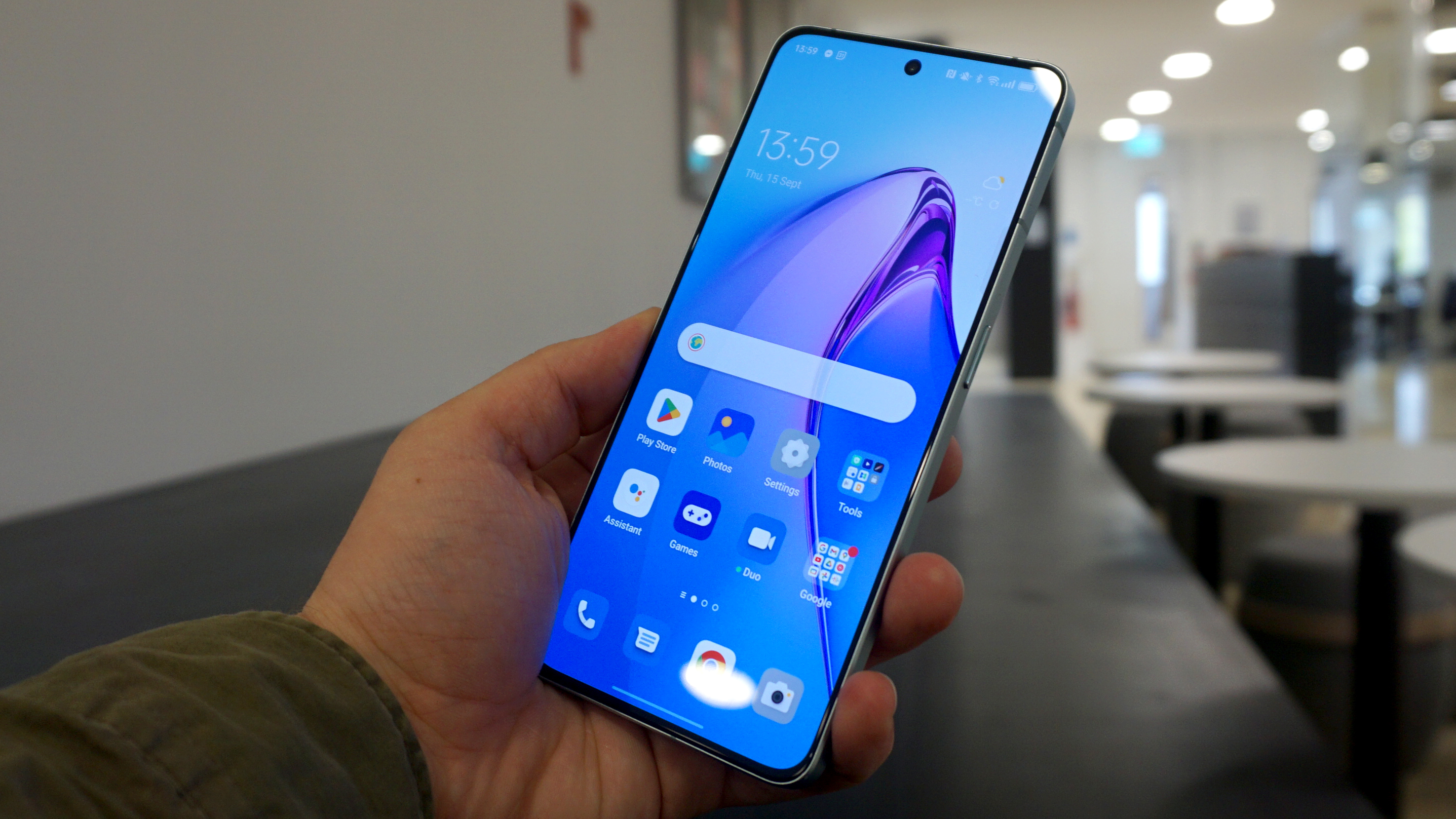
These two phones straddle the line between ‘mid-range’ and ‘top-end’, undercutting the likes of the Samsung Galaxy S22 and Xiaomi 12, yet costing more than the myriad impressive Honor, Poco and Moto mid-rangers that we’ve seen this year.
The Oppo Reno 8 Pro went on sale in late September 2022.
- Value score: 3.5/5
Oppo Reno 8 Pro design
The Oppo Reno 8 Pro looks good from a distance, but when you get it in your hands and use it for a while, it disappoints.
There are two shades for the phone, black and light blue, and each model of the phone has a shiny glazing intended to make fingerprints less apparent – it mostly works but you can still see smudges from time to time. The back of the phone uses a ‘unibody’ design, which means the back and the camera bump are all one, though there’s a chunky ridge that distinguishes the bump from the rest of the rear.
It’s a noticeable bump and combined with the huge black spots that mark out each camera, the handset bears more than a passing resemblance to the Samsung Galaxy S21 Ultra. The giant camera spots are misleading though, as, within the large black circles that denote each lens, the lenses themselves are much smaller than you’d think from a glance.

The phone has a USB-C charging port, but there are no 3.5mm headphone jacks in sight, which might disappoint audio purists who like their physical wires.
The power button is on the right edge of the phone, which we found easy enough to reach with medium-sized hands, while the volume rocker is opposite that on the left edge.
These edges are the disappointing part of the phone, though, as Oppo has apparently decided to follow the trend of smartphones with completely flat edges. The angular sides make the phone uncomfortable to hold, as you’ve always got some sharp right angle digging into your palm.
And since this is a fairly big phone, your hand is likely already stretched to hold the thing.
The way a smartphone feels in your hand is an oft-overlooked aspect of the user experience, but unfortunately for Oppo, we never found the Reno 8 Pro very comfortable to hold or use.
- Design score: 3.5/5
Oppo Reno 8 Pro display
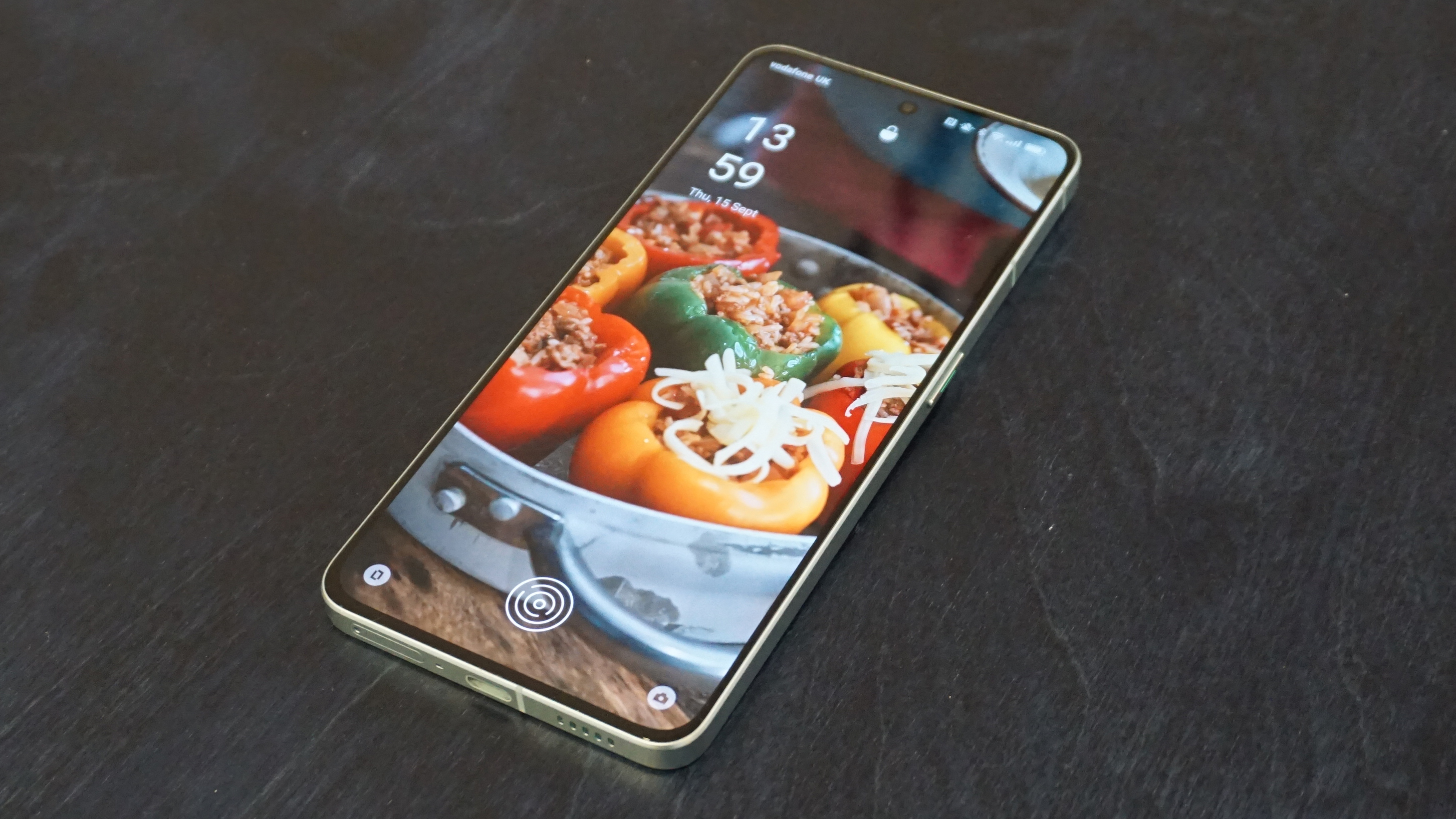
The Oppo Reno 8 Pro has a fairly big screen, as it clocks in at 6.7 inches diagonally. The small ‘punch-hole’ cut-out for the front camera, and the very thin bezels around the edge of the device, make it look even bigger.
It’s an AMOLED screen with an FHD+ resolution and 120Hz refresh rate, and all these specs are standard for, or a little bit better than, other devices at this price.
So overall we were fairly impressed by the Reno’s display, and it’s one of the best phones at its price for streaming media or playing games.
Embedded within the display is the fingerprint scanner. We found this snappy and reliable to use, which is something not even all premium phone makers can claim.
- Display score: 4/5
Oppo Reno 8 Pro cameras
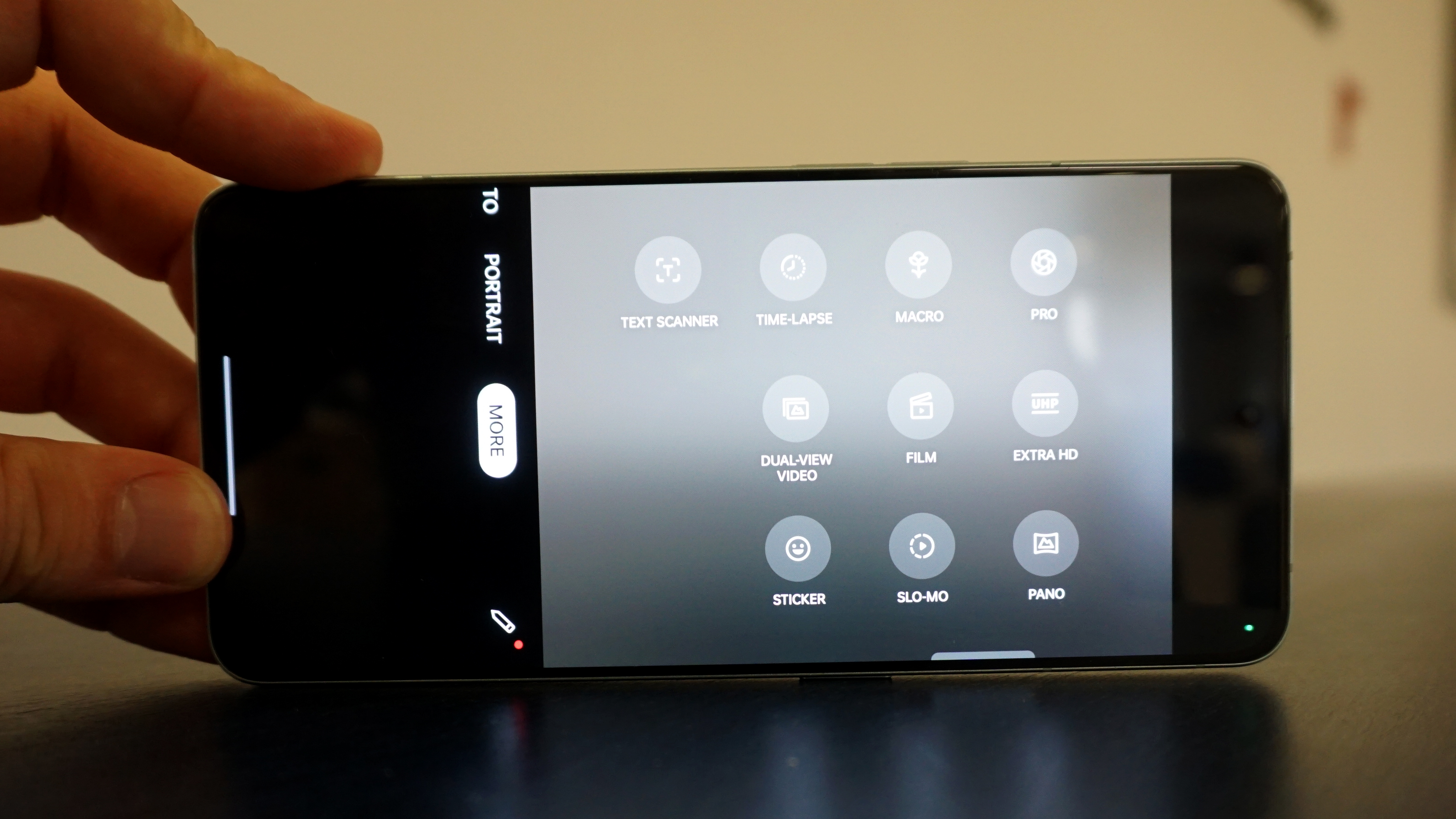
Oppo made a big song-and-dance about the cameras of its Reno 8 family, which is a surprise when you consider that the snappers aren’t exactly competitive for a phone at this price.
The main camera here uses the Sony IMX766, a 50MP sensor that’s taken the phone world by storm since it debuted earlier in the year, as it’s great for low-light photography yet doesn’t cost much, letting phone brands use it while keeping costs low.
In the Reno, as in the many other phones we’ve tested that use it, it’s good for taking snaps at night or in other situations where the lighting is low. The big sensor size also means it captures lots of light in other situations too, so pictures are often bright and bold.
However, the other cameras aren’t anything to write home about. There’s an 8MP ultra-wide and 2MP macro snapper, but neither take images with the same quality as the main snapper, so we avoided using them whenever possible.
Joining the party is a 32MP selfie camera, which we found good for… well, selfies, what else are you going to use it for?


Overall, these cameras are fit for purpose, but nothing to write home about. However, Oppo is likely counting on the MariSilicon X to be its ace in the hole. This Neural Processing Unit (NPU) was first debuted in its top-end Find X phones and brings lots of AI smarts and tweaking to make images better than they otherwise would be. The absence of this chip is also one of the key differentiating factors between the standard and Pro Reno 8 phones.
It’s hard to say exactly how much this chip contributes – it’s not like we can test the phone without it – but from our time with the phone, we didn’t see a marked improvement in photo quality over the myriad other Android phones that have this camera combo (the OnePlus 10T and Realme 9 Pro Plus both had exactly the same snappers).
Pictures still look good, and unless you’ve used top-end camera phones like the iPhone or Samsung Galaxy, you’ll be happy with what’s on offer here.
Video recording is available at 4K 30fps or 1080p 60fps, which is what you’d expect for a phone at this price.
- Camera score: 4/5
Camera samples









Oppo Reno 8 Pro performance and specs
While the Oppo Reno 8 Pro doesn’t quite compare with the Pixel 6, its same-price rival, in terms of camera or design, it certainly wins out when considering the power of the phone.
The Reno has a chipset called the MediaTek Dimensity 8100 MAX, which is a slightly improved version of the – you guessed it – Dimensity 8100. It’s a fairly powerful chip, and while it doesn’t match the performance of the top-end A16 Bionic or Snapdragon 8 Plus Gen 1 chips we’ve seen in some premium phones, it really doesn’t need to.
In practice, the MediaTek chip is powerful enough for everything you need your phone to do. We played plenty of games, including top-end ones, recorded high-res video, and downloaded multiple files at once with no issue.
A lovely little surprise in this phone is the 256GB storage, as most phones default to 128GB. This gives you loads of space for all the apps or downloads you’ll need.
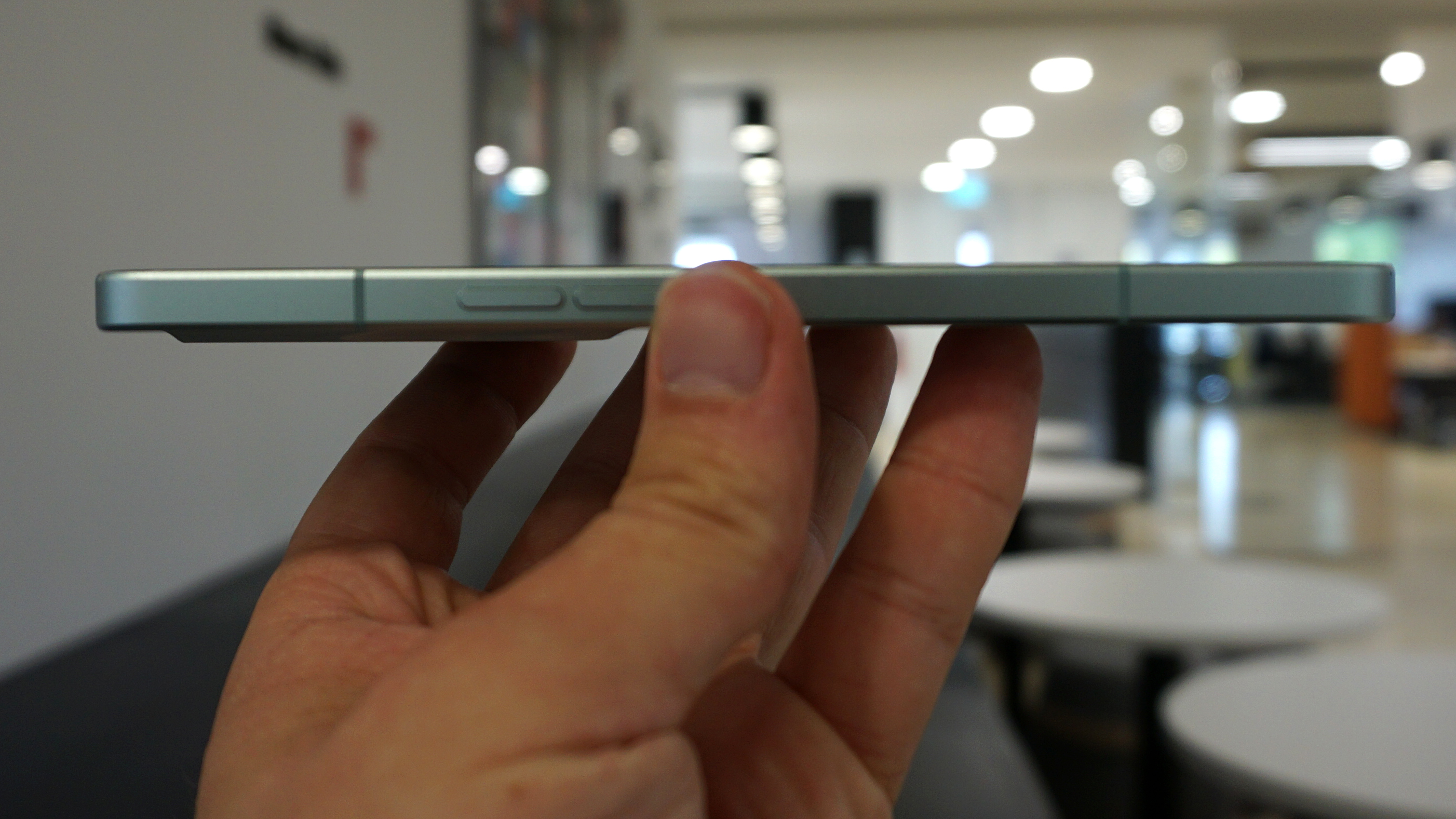
The phone has 5G, letting you connect to networks if you have a contract and live in an area that’s supported. 5G speeds depend on many factors, and the phone you’re using isn’t one of the main ones, so it’s not fair to judge the Reno on its connection speeds.
- Performance score: 4/5
Oppo Reno 8 Pro software
The Oppo Reno 8 Pro uses Android 12 with Oppo’s own ColorOS 12 laid over the top – this is a fork of Google’s operating system which mainly brings a design change to menus.
ColorOS has bigger and brighter icons than stock Android – it doesn’t look quite as clean, but some might prefer it that way. You can check out the review images for a glimpse of how it looks.
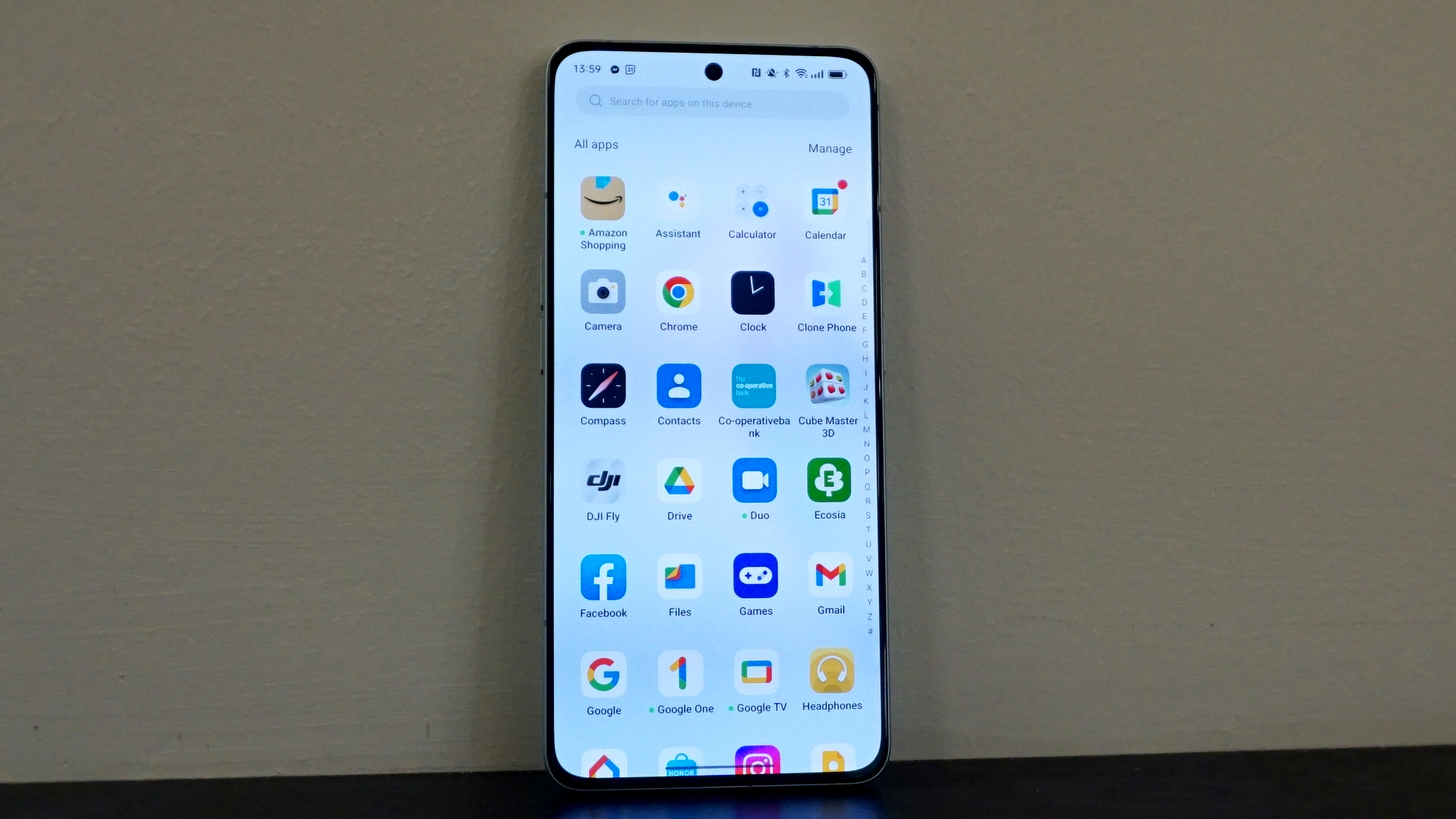
There was a fair amount of bloatware, or pre-installed apps, on the phone. These include TikTok and Amazon Shopping and games like Cube Master 3D and Tile Master 3D. A quick deleting spree cleaned up our menus, but it’s surprising to see bloatware on a phone of this price.
- Software score: 3.5/5
Oppo Reno 8 Pro battery life
Thankfully, despite having a big screen, 5G connectivity and fairly powerful chipset, the Reno 8 Pro has good battery life.
There’s a 4,500mAh battery here, which is pretty average for a phone of this size and price. We’ve seen similar handsets with way bigger power packs but similar battery lives. This suggests to us that Oppo’s software has some smart optimizations.
From our testing, the Reno could reliably coast through a day of use, and would generally get mid-way into a second day without needing a recharge. This was from medium use – hours spend gaming would drain it faster, obviously.
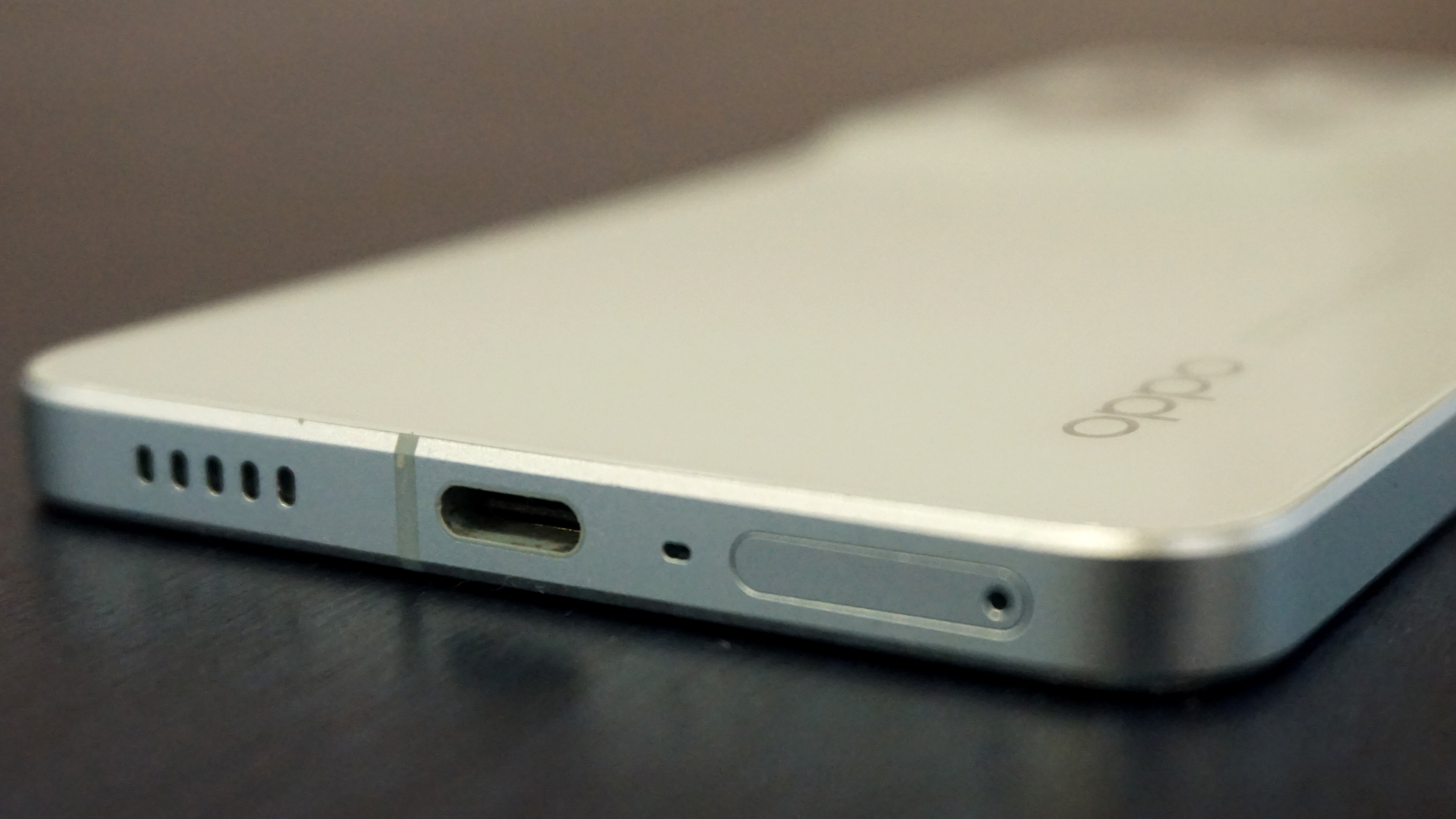
When the battery is low, charging is decently quick, with 80W charging from the in-box charger getting the phone from empty to full in just half an hour. Sure, some mid-rangers have faster powering, but 30 minutes is more than enough for us.
Powering at that speed for too long can damage battery health on most phones, but Oppo’s Battery Health Engine, introduced with the Reno 8 series, is designed to stop that happening through a series of optimizations. For example, the phone can analyze when you normally wake up, and only power to be filled at that time.
Sure, that can be annoying when the phone is wrong, and we sometimes found that the phone wanted to charge slowly to hit this timer, when we actually wanted to quickly power it up before a night out, but generally it was useful. We can’t test the device for the years required to notice the benefits of these battery health tweaks, but for people who own their handsets for multiple years, it’ll likely pay off in spades.
There’s no wireless charging here, which isn’t a total surprise for a phone at this price.
- Battery score: 4.5/5
Oppo Reno 8 Pro score card
| Attributes | Notes | Rating |
|---|---|---|
| Design | While the Oppo is attractive, its design means it isn't quite comfortable to hold. | 3.5/5 |
| Display | The Oppo Reno 8 Pro's screen is good-looking. | 4/5 |
| Performance | This is a powerful phone for its cost, making gaming a breeze. | 4/5 |
| Camera | For its price, the Reno takes good snaps, with the Marisilicon NPU pulling its weight. | 4/5 |
| Battery | The Reno has a good battery life, as well as impressive fast charging. | 4.5/5 |
| Software | The software is fairly appealing to look at, but bloatware mars the experience. | 3.5/5 |
| Value | The Oppo Reno 8 Pro is good for its price, but not especially competitive. | 3.5/5 |
Should I buy the Oppo Reno 8 Pro?
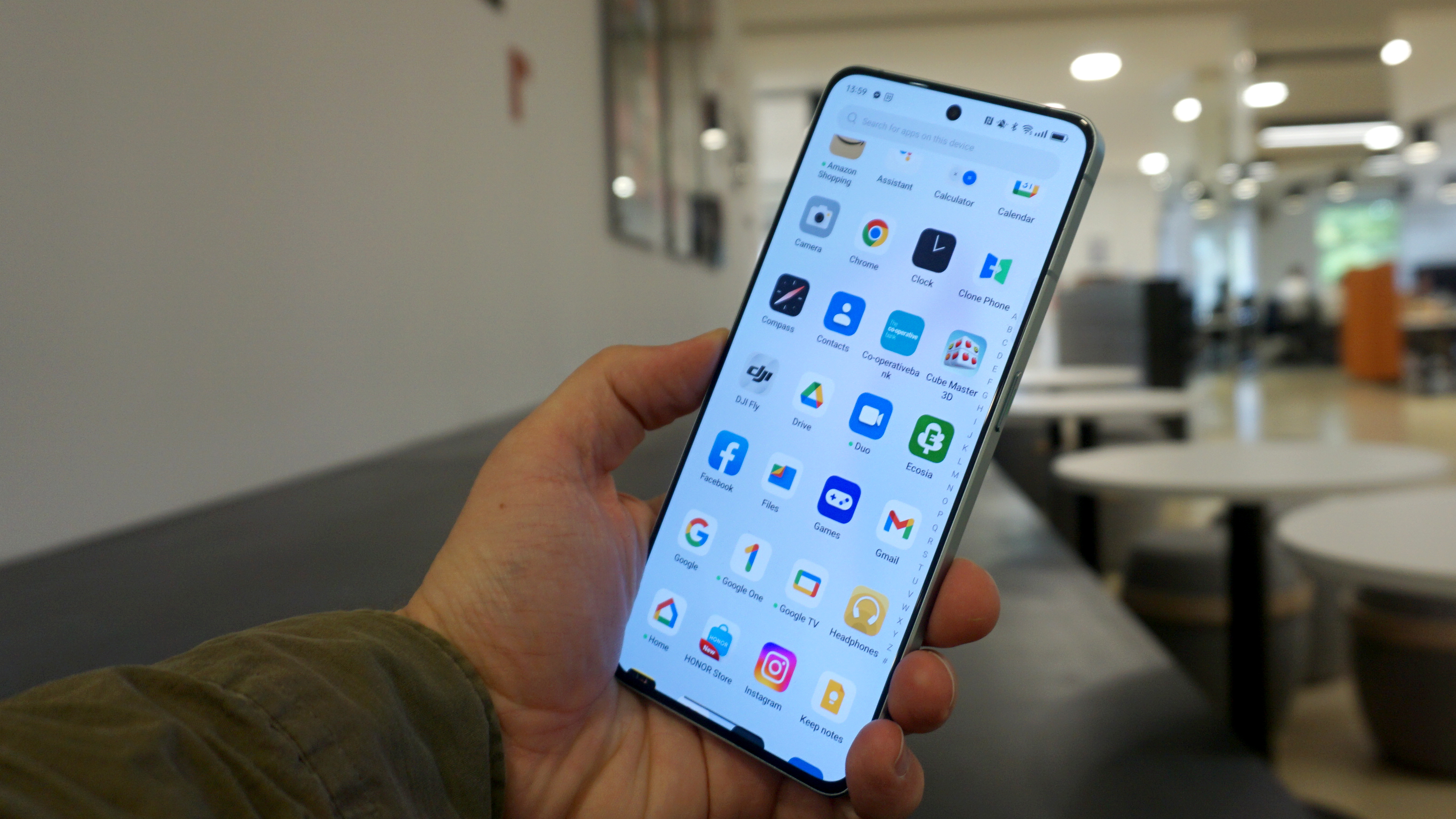
Buy it if…
You want a powerful phone
The MediaTek chipset used here is good for many tasks, most importantly gaming, so if you like blitzing through mobile titles on the fly then this will be a good option.
Appearance is important
If you want an eye-catching Android phone, you can do a lot worse than the Reno 8 Pro, with its shiny unibody build.
Fast charging is important
The Reno 8 Pro’s 80W fast charging ensures your phone will be powered to full in 30 minutes or less, and the battery health engine makes sure that this won’t ruin the device either.
Don’t buy it if…
You have sensitive hands
We found the Oppo Reno 8 Pro quite uncomfortable to hold, and if you think you might find the same, we’d recommend avoiding it.
You’re on a budget
The Reno 8 Pro’s price is decent, but it’s not quite competitive for the cost, and you could get a similar phone for less if you shop around.
Photography is your focus
If the main thing you do with a phone is take photos, you’ll find this handset fine, but you could do a lot better by looking at the Pixel 6 (or a pricier phone).
Also consider…
Google Pixel 6
A comparison we’ve made plenty is with the same-price Pixel 6, which has a smaller screen, weaker processor and slower charging, but a better camera array and easy-to-hold design.
Check out our full Google Pixel 6 review
Xiaomi 11T Pro
Another phone for the same price, the Xiaomi has a higher-res main camera and similar display and performance specs – it also charges quicker. However, it has more of a utilitarian design.
Check out our full Xiaomi 11T Pro review
Moto G200
The Moto G200 is cheaper but it has a good-looking display with a higher refresh rate, a top-end processor and nice clean software. It’s a bargain for its price and presents a similar package to the Oppo.
Check out our full Moto G200 review

Tom Bedford joined TechRadar in early 2019 as a staff writer, and left the team as deputy phones editor in late 2022 to work for entertainment site (and TR sister-site) What To Watch. He continues to contribute on a freelance basis for several sections including phones, audio and fitness.
